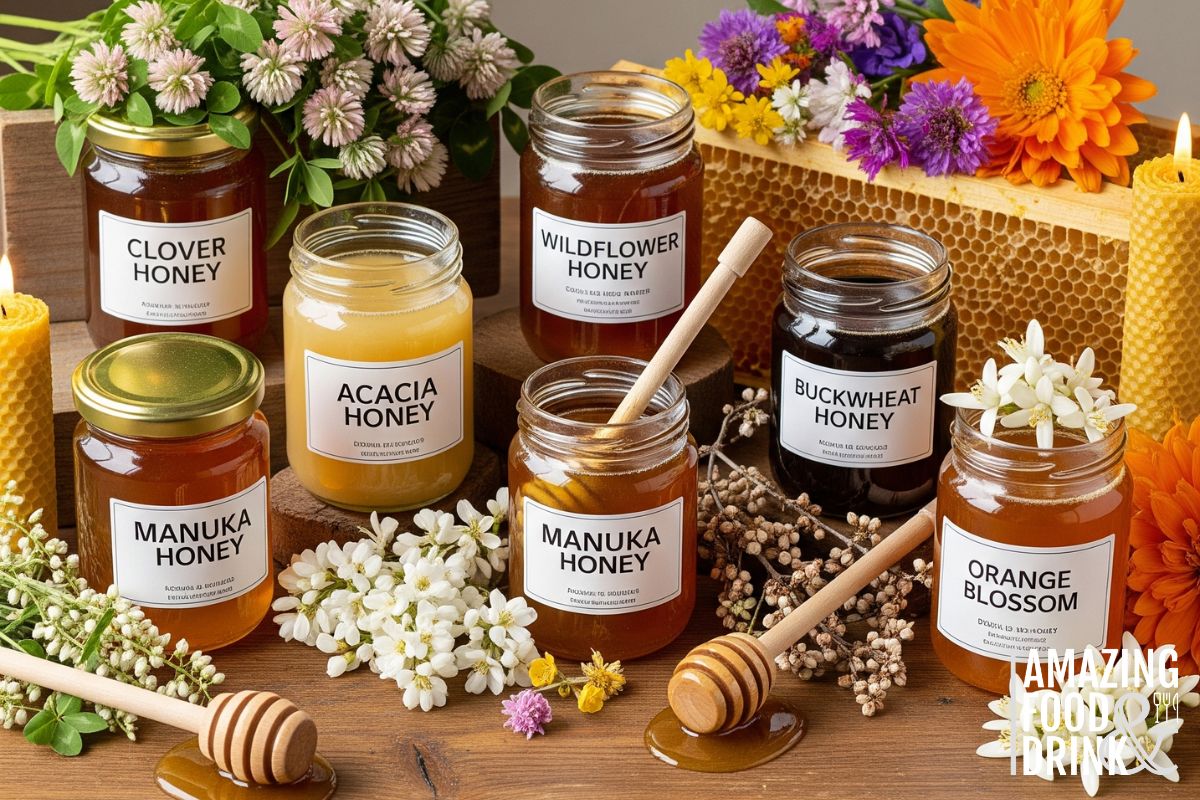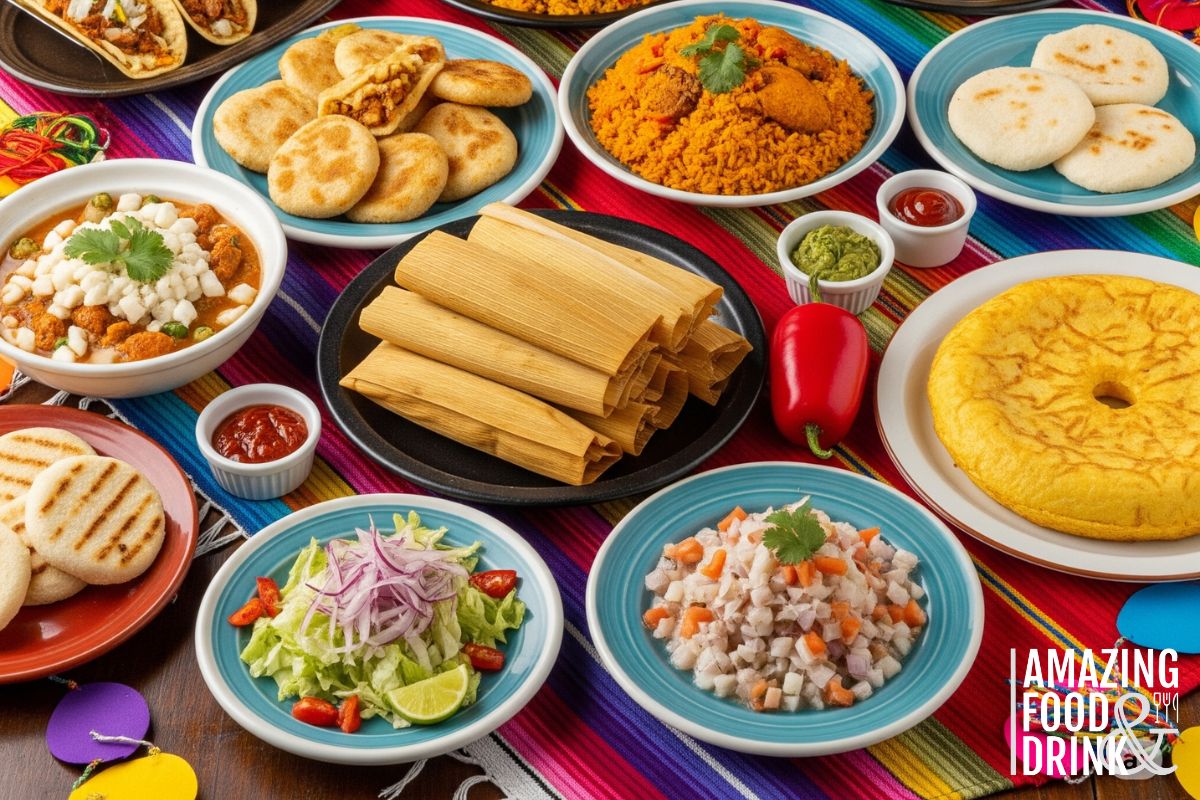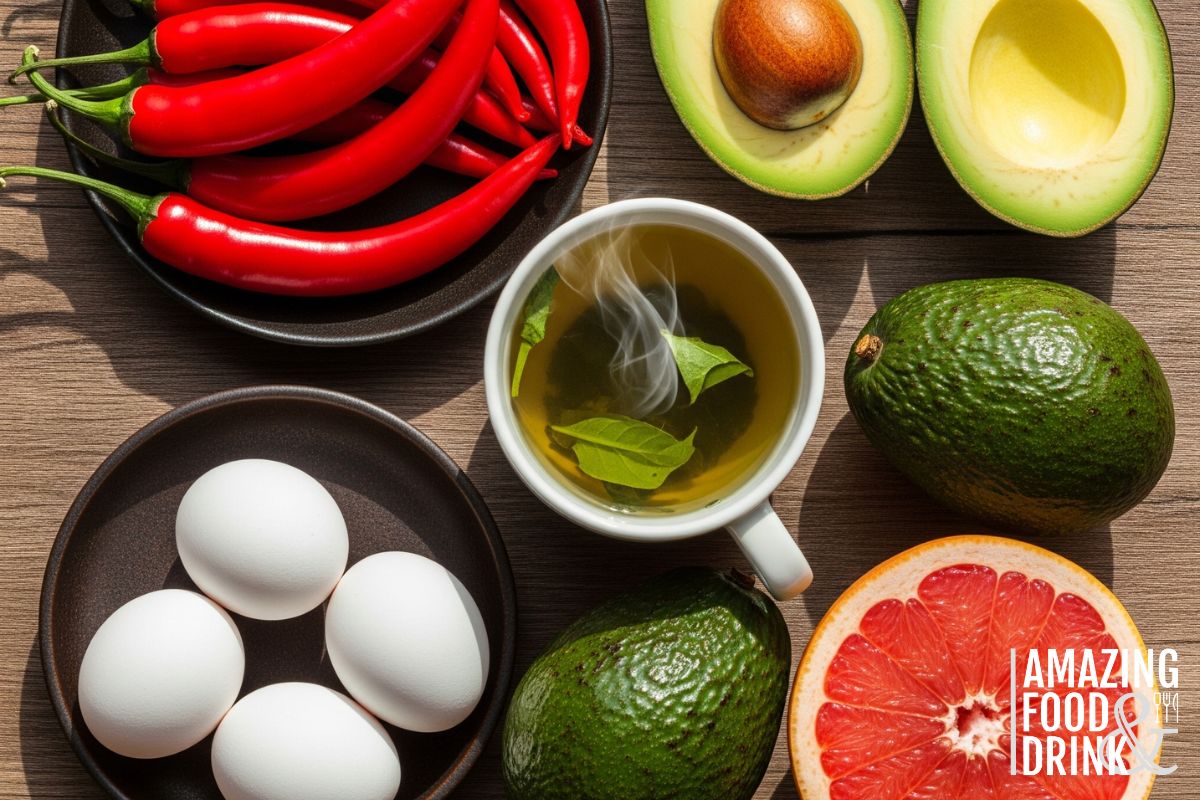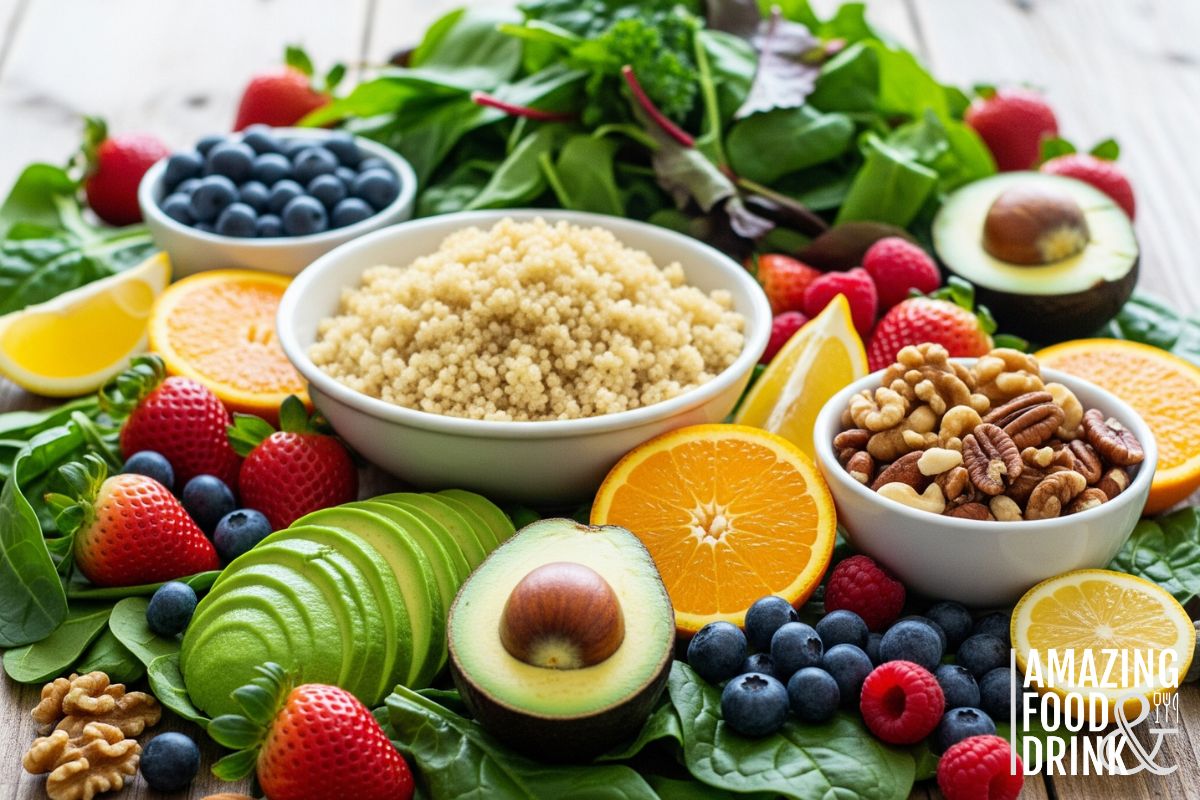Honey has been treasured for thousands of years, yet many people don’t realise the incredible complexity behind this golden liquid. These honey facts and recipes will reveal fascinating insights about nature’s perfect sweetener beyond simple sugary satisfaction.
From ancient civilisations using honey for mummification to modern chefs creating innovative culinary masterpieces, this comprehensive guide explores essential honey facts and recipes. Whether seeking natural health benefits or delicious cooking inspiration, understanding honey’s remarkable properties transforms how you use this liquid gold.
Discover amazing honey facts and recipes that showcase why this natural wonder deserves a prominent place in every kitchen. Our collection combines scientific insights with practical cooking applications to help you make the most of honey’s incredible versatility.
Table of Contents
Why Honey Matters: Beyond Basic Sweetness

Honey represents nature’s most sophisticated food production, involving complex enzymatic processes and botanical diversity. Understanding honey facts and recipes can lead to better health, enhanced cooking, and a deeper appreciation for bee conservation efforts that sustain our food systems.
What is Honey?
Honey is a sweet, viscous substance bees produce from flower nectar through a fascinating process of enzymatic transformation. Worker bees collect nectar, mix it with their enzymes, and store it in hexagonal wax cells where moisture evaporates, creating the concentrated honey we know.
The composition varies depending on floral sources, but honey typically contains:
- Fructose (38%): Natural fruit sugar
- Glucose (31%): Primary energy source
- Water (17%): Natural moisture content
- Sucrose, maltose, and other sugars (7%)
- Vitamins, minerals, and enzymes (7%)
10 Astounding Facts About Honey

These remarkable honey facts and recipes demonstrate why this natural sweetener captivates scientists, chefs, and health enthusiasts worldwide. Each fact reveals surprising truths about honey’s production, properties, and potential applications.
1. Honey Never Spoils
Archaeological discoveries have uncovered 3,000-year-old honey that remains perfectly edible. This remarkable preservation occurs due to honey’s low moisture content and acidic pH, which create an inhospitable environment for bacteria.
2. Bees Travel Incredible Distances
To produce just one kilogram of honey, bees collectively fly approximately 180,000 kilometres, equivalent to circling the Earth 4.5 times. A single bee visits 2-5 million flowers during its lifetime.
3. Raw Honey Contains Living Enzymes
Unprocessed honey contains beneficial enzymes like amylase, invertase, and glucose oxidase. These enzymes aid digestion and contribute to honey’s antimicrobial properties, but are destroyed through pasteurisation.
4. Honey Has Unique Healing Properties
Medical-grade honey, particularly Manuka honey from New Zealand, contains methylglyoxal, a compound with proven antibacterial effects. Hospitals worldwide use honey-based dressings for wound treatment.
5. Different Flowers Create Distinct Flavours
The nectar source dramatically influences honey’s taste, colour, and aroma. Acacia honey tastes mild and floral, whilst buckwheat honey offers robust, molasses-like notes.
6. Honey Crystallisation is Natural
All pure honey eventually crystallises due to its glucose content. This process doesn’t indicate spoilage; simply warm crystallised honey gently to restore its liquid state.
7. Honey Contains Natural Antioxidants
Dark honey varieties contain higher levels of antioxidants, including phenolic acids and flavonoids, which help combat free radicals in the body.
8. Ancient Civilisations Prized Honey
Egyptians used honey for mummification, and ancient Greeks considered it food of the gods. It appears in virtually every major religious text throughout history.
9. Honey Supports Local Ecosystems
Purchasing local honey may help with seasonal allergies, as it contains trace amounts of local pollen. This also supports regional beekeepers and biodiversity.
10. Worker Bees Are All Female
Only female bees collect nectar and produce honey. Male bees (drones) exist solely for reproduction and don’t participate in honey production.
Popular Types of Honey

Exploring different honey varieties enhances your knowledge of honey facts and recipes while expanding your culinary repertoire. Each type offers unique flavour profiles, colours, and textures complementing specific dishes and applications.
Manuka Honey
Produced exclusively in New Zealand and Australia from tea tree blossoms, Manuka honey contains unique antibacterial compounds. Look for UMF (Unique Manuka Factor) ratings of 10+ for therapeutic benefits.
Acacia Honey
Light-coloured with a delicate floral taste, acacia honey remains liquid longer than most varieties due to its high fructose content. Perfect for drizzling over desserts.
Wildflower Honey
Multi-floral honey reflecting local seasonal blooms. Flavour profiles vary by region and season, making each batch unique.
Heather Honey
Dark, aromatic honey with a distinctive gel-like texture from Scottish and Northern English moors is prized for its complex, wine-like flavour.
Orange Blossom Honey
Citrus-scented honey with bright, fresh notes. Excellent for baking and pairs beautifully with strong cheeses.
Health Benefits of Honey
Understanding honey’s therapeutic properties enriches honey facts and recipe applications, revealing why traditional medicine systems worldwide have prized this natural remedy. Modern research continues validating ancient wisdom about honey’s healing potential.
Natural Energy Source
Honey provides quick energy through natural sugars whilst delivering trace vitamins and minerals. Unlike refined sugar, honey contains beneficial compounds that support metabolism.
Antimicrobial Properties
Raw honey naturally fights bacteria, viruses, and fungi. The enzyme glucose oxidase produces hydrogen peroxide, creating an antiseptic effect.
Cough and Throat Relief
Studies show that honey effectively soothes coughs and throat irritation, often outperforming over-the-counter medications for children over 12 months.
Digestive Support
Honey acts as a prebiotic, feeding beneficial gut bacteria. It may help reduce inflammation in the digestive tract and ease gastritis symptoms.
Wound Healing
Medical-grade honey accelerates wound healing by maintaining moisture, reducing inflammation, and preventing bacterial infection.
Important Safety Note: Never give honey to infants under 12 months due to the risk of botulism.
Honey vs Sugar: Nutritional Comparison
Significant differences emerge beyond basic sweetness when comparing honey’s nutritional facts and recipes with refined sugar. One tablespoon of honey contains 64 calories, compared to sugar’s 49 calories, but honey provides substantially more nutritional value.
Honey contains approximately 17 grams of carbohydrates, a balanced mix of fructose (40%) and glucose, while sugar consists entirely of sucrose.
Honey’s glycemic index ranges from 35 to 55, considerably lower than sugar’s 65, meaning honey causes less dramatic blood sugar spikes.
Most importantly, honey contains trace amounts of vitamins, minerals, antioxidants, and beneficial enzymes that refined sugar completely lacks, making honey a more nutritionally complete sweetening choice despite its slightly higher caloric content.
How to Choose Quality Honey

Applying knowledge of honey facts and recipes requires selecting authentic, high-quality honey that delivers maximum flavour and health benefits. Understanding quality indicators helps you avoid processed alternatives and support sustainable beekeeping practices.
Look for These Indicators:
- Raw and unpasteurised labels
- Single-origin source information
- Crystallisation (indicates authenticity)
- Thick consistency when poured
- Local producer details
Avoid These Red Flags:
- Extremely cheap prices
- Ultra-clear appearance
- Added ingredients listed
- No country of origin
- Suspiciously smooth texture
Honey Storage Tips
- Store in airtight glass containers
- Keep at room temperature (18-24°C)
- Avoid direct sunlight
- Don’t refrigerate (causes crystallisation)
- Use clean, dry utensils to prevent contamination
Seasonal Honey Guide
Seasonal variations in honey facts and recipes reflect natural flowering cycles and regional botanical diversity. Understanding these patterns helps you select optimal honey varieties for specific times of year and cooking applications.
Spring Honey: Light, floral varieties from fruit tree blossoms and early wildflowers are excellent for tea and light desserts.
Summer Honey: Robust flavours from herbs and diverse wildflowers. Perfect for marinades and glazes.
Autumn Honey: Rich, complex varieties from heather and late-blooming plants. Ideal for baking and cheese pairings.
Winter Honey: Stored honey from previous seasons and often crystallised, perfect for spreading on toast.
Supporting British Beekeepers

Incorporating local honey into your honey facts and recipes repertoire supports:
- Native bee populations
- Traditional beekeeping practices
- Local biodiversity
- Regional food systems
- Sustainable agriculture
Look for honey from nearby counties, such as Yorkshire heather honey, Devon wildflower honey, or Scottish highland varieties. Each offers unique regional characteristics, perfect for enhancing your honey facts and recipes collection.
Delicious Honey Recipes
Applying honey facts and recipes transforms everyday cooking into extraordinary culinary experiences. These carefully selected recipes showcase honey’s versatility across savoury mains, healthy sides, and satisfying treats.
Honey-Glazed Chicken Thighs

Prep: 10 minutes | Cook: 45 minutes | Serves: 4
Ingredients:
- 8 chicken thighs, skin-on
- 4 tbsp honey
- 2 tbsp soy sauce
- 2 tbsp olive oil
- 3 garlic cloves, minced
- 1 tsp ground ginger
- Salt and pepper to taste
Method:
- Preheat oven to 200°C (180°C fan).
- Whisk honey, soy sauce, olive oil, garlic, and ginger in a bowl.
- Season chicken with salt and pepper, then coat with honey mixture.
- Arrange in a baking dish and roast for 40-45 minutes until golden.
- Rest for 5 minutes before serving.
Honey-Roasted Vegetables

Prep: 15 minutes | Cook: 30 minutes | Serves: 6
Ingredients:
- 500g mixed root vegetables, chopped
- 3 tbsp honey
- 2 tbsp olive oil
- Fresh thyme sprigs
- Sea salt and black pepper
Method:
- Heat oven to 220°C (200°C fan).
- Toss vegetables with honey, oil, and seasonings.
- Roast for 25-30 minutes until caramelised.
- Garnish with fresh thyme before serving.
No-Bake Honey Oat Bars

Prep: 15 minutes | Chill: 2 hours | Makes: 12 bars
Ingredients:
- 200g rolled oats
- 100ml honey
- 100g almond butter
- 50g mixed seeds
- 1 tsp vanilla extract
- Pinch of salt
Method:
- Line a 20cm square tin with parchment paper.
- Mix all ingredients until well combined.
- Press firmly into prepared tin.
- Refrigerate for 2 hours until set.
- Cut into bars and store in an airtight container.
Honey Lemon Dressing

Prep: 5 minutes | Makes: 150ml
Ingredients:
- 3 tbsp honey
- 3 tbsp lemon juice
- 6 tbsp extra virgin olive oil
- 1 tsp Dijon mustard
- Salt and pepper to taste
Method:
- Whisk honey and lemon juice until smooth.
- Gradually add olive oil, whisking constantly.
- Stir in mustard and season to taste.
- Store refrigerated for up to one week.
These comprehensive honey facts and recipes demonstrate why this natural sweetener deserves a place in every kitchen. It offers remarkable flavour and proven health benefits that refined sugars simply cannot match.
From understanding honey’s antimicrobial properties to mastering glazes and marinades, applying honey facts and recipe knowledge transforms ordinary cooking into extraordinary culinary experiences while supporting vital pollinator populations.
Start your honey journey by experimenting with different varieties, trying these delicious honey facts and recipes, and discovering how this liquid gold connects us to thousands of years of culinary tradition while delivering modern nutritional advantages.
FAQs
1. Is honey better than sugar?
Honey contains trace nutrients and antioxidants absent in refined sugar and has a lower glycemic index. These honey facts and recipe considerations show that honey offers superior nutritional value, though both should be consumed in moderation.
2. Can people with diabetes eat honey?
People with diabetes should treat honey like any other sugar and consume it sparingly, monitoring blood glucose levels. Consult healthcare providers for personalised advice.
3. Why does honey crystallise?
Crystallisation occurs naturally due to the glucose content. It doesn’t indicate spoilage. Gently warm crystallised honey to restore liquid consistency.
4. How much honey per day is safe?
Most adults can safely consume 1-2 tablespoons daily as a balanced diet. Children should have smaller amounts, and infants under 12 months should avoid honey entirely.
5. What’s the difference between raw and processed honey?
Raw honey retains natural enzymes, pollen, and beneficial compounds. Processed honey is heated and filtered, removing many nutrients but creating a smoother texture.



